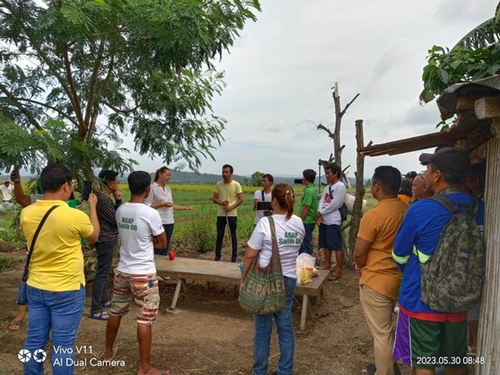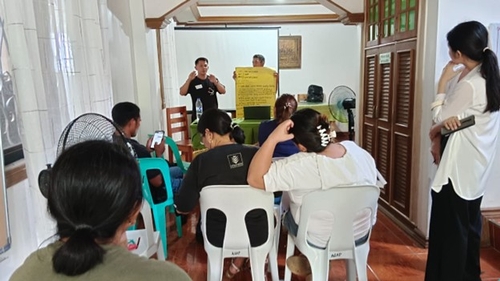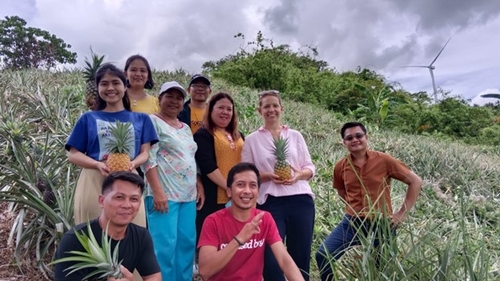This June, I had the opportunity to participate in a two-week USAID (United States Agency for International
Development) Farmer-to-Farmer volunteer assignment in the Philippines. The program is a way for U.S. agricultural experts to share their knowledge by training farmers in developing and transitional countries.
In my role as a volunteer consultant, I was tasked with helping a community-based farmer organization, Ashon Sa Hirap, Inc. (ASHI), develop an agritourism strategy in two provinces, Laguna and Rizal, directly east of Manila on the island of Luzon.
The farmers that ASHI works with in these regions are small-scale, limited-resource, diversified vegetable farmers. The crops ranged from spring onions and bell peppers sold via a cooperative model to institutional markets, to pineapple, coconut, ube, long beans, bitter gourds, amongst others, for local markets. These farmers are extremely vulnerable to the risks of farming that have been exacerbated by climate change, including price instability, unpredictable growing seasons, and environmental disasters, such as increasingly powerful typhoons. ASHI sees agritourism as a strategy to mitigate risk by diversifying and increasing revenue for its members.

The conversations that I had with the farmers – once the ice was broken and regardless of the language barrier – told me so much about the challenges they face, their perspectives, culture, and beyond.

Farmers are adaptive and resourceful, so it did not surprise me that when asked what they thought about participating in agritourism, the farmers, in so many words, said “Sure, I think it's a good idea.” What did stick out to me, however, was how the farmers wanted to approach agritourism.
The majority of the farmers had no interest in developing their own agritourism business for their individual farm; instead, they wanted to create a collaborative agritourism experience with other farmers in their community. The farmers were quick to identify who has the land with the best view (for camping), who would be a good teacher (for educational activities), who is the best cook (farm-to-table meals), and so on.
Collaboration and partnerships are key to agritourism. We see this throughout California agritourism, with our farm and wine trails, and countless producer-to-producer partnerships, such as Apple Hill Growers Association, Fresno County Fruit Trail, and Sonoma County Farm Trail, to name a few. Discussing regional collaboration and shared marketing is a part of every agritourism training that I do. But what the Filipino farmers were suggesting was beyond shared marketing – they were proposing a truly communal business model.
It goes without saying that these conversations shaped the direction of the resources that I developed with ASHI, but they also helped shift the way I think about my agritourism extension efforts in California.
Could a communal approach to agritourism be appropriate for some small-scale California farmers? Would this increase the ability of a more diverse population of farmers to develop agritourism, use agritourism as a risk management strategy, and ultimately increase their resiliency and viability? Who am I not inviting to the table when the agritourism resources that I use are designed for individual businesses?
These are questions that I hope to explore further, in collaboration with UC ANR colleagues, trusted community-based organization partners, and farmers that don't see themselves fitting into the current model of agritourism.
While I was honored to share my knowledge and co-develop an agritourism strategy and resources that were tailored to the farmers in Laguna and Rizal, I found the experience much more of a reciprocal exchange. Not only was the experience personally enriching, I was introduced to an agritourism model that has the potential to increase accessibility of agritourism adoption by California's small-scale farmers
